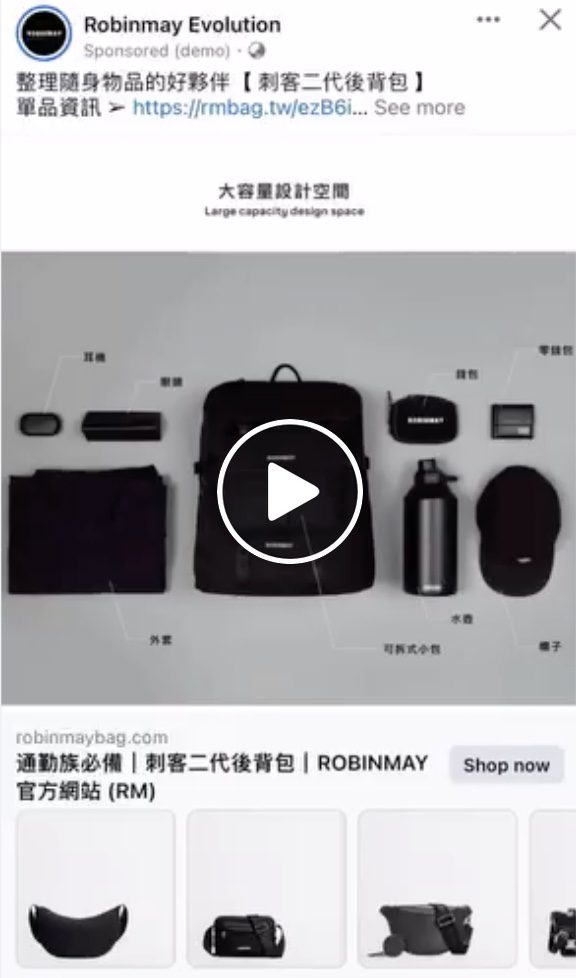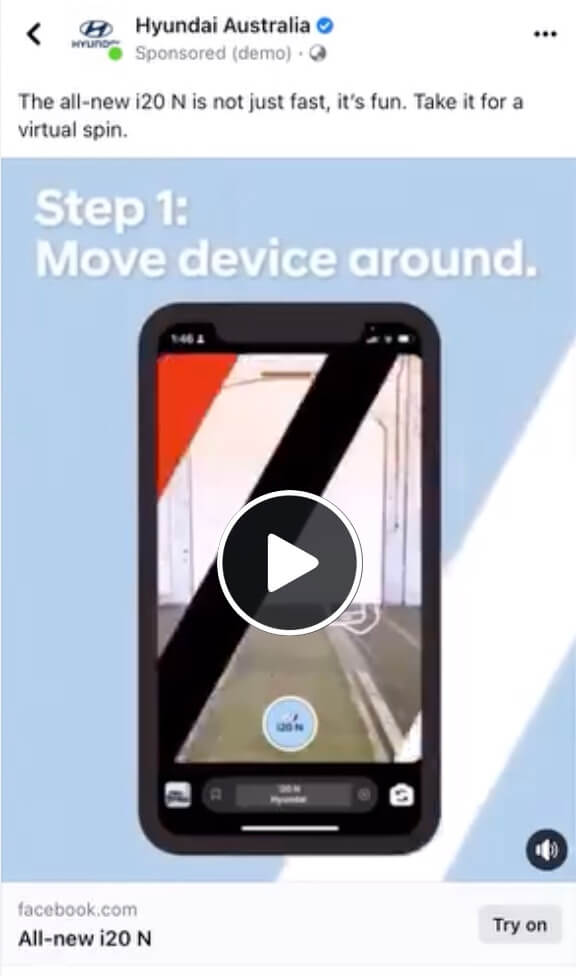How to Use Social Media for Ecommerce Marketing Success
The ecommerce industry has exploded over the past decade, transforming the way people shop. From groceries to gadgets, and home appliances to medicines, the convenience of ordering anything from anywhere at any time and having products delivered right to the doorstep is a benefit no one can resist. However, in such a fiercely competitive space, standing out can be a challenge. That’s where social media for ecommerce comes in – a powerful strategy that allows businesses to connect with audiences, showcase their offerings, and drive sales too.

Unlike other digital channels, social media has a unique way of balancing promotion and engagement. Therefore, it has become an integral part of ecommerce marketing. Whether you’re a business owner looking to harness its potential or a marketer aiming to boost ecommerce brand growth, look no further. This blog will explore the benefits and strategies of leveraging social media for ecommerce success.
- Why Should You Use Social Media for Ecommerce Marketing?
- 1. Build Brand Awareness – Expanding Your Customer Base
- 2. Enhance Customer Engagement – Make Meaningful Connections
- 3. Boost Brand Loyalty – Turning Customers Into Brand Advocates
- 4. Drive Conversions – Boost Sales Through Social Media
- 5. Increase Website Traffic – Bring More Shoppers to Your Online Store
- Give Your Social Media Page a Makeover With KIMP
Why Should You Use Social Media for Ecommerce Marketing?
1. Build Brand Awareness – Expanding Your Customer Base
More than 58% of marketers prioritize brand awareness as one of the most crucial metrics in marketing. Because brand awareness creates familiarity. This in turn builds trust and encourages potential buyers to choose your ecommerce business over others. Therefore, any tool that can help boost your brand awareness is a good investment for ecommerce businesses.
Firstly, social media helps ecommerce businesses reach a wider group of audiences. According to Statista, of the 5.52 billion internet users, 5.22 billion are social media users. This roughly amounts to about 63.8% of the global population. So, that’s the volume of audience you can reach out to on leveraging social media for ecommerce marketing.
But does it really work? Absolutely. According to Facebook, a popular Taiwanese brand called ROBINMAY was able to achieve about 3.2 point lift in “top-of-mind” awareness with their ads on Meta platforms.
Formats to explore
So when it comes to capitalizing on social media for ecommerce brand awareness, what are the content formats that work?
- Video ads – product demos, review videos
- Carousel ads – before/after photos, feature highlights
- Story ads – seamless visual narrative
- Reels on Instagram – to engage, entertain, and educate your audience
- YouTube Shorts – to hop on trends and therefore expand your reach
- TikTok videos – shareable videos mean you reach an even bigger audience through your followers.
A few quick tips
- Leverage platform-specific trends. For instance, TikTok challenges, and trending audio tracks on Instagram can all help you resonate with audiences on that specific platform.
- Tap into influencer and brand partnerships to maximize your reach and for a more targeted reach.
- Use engaging formats like custom filters to encourage customer participation. For example, the below video shows a YouTube Shorts challenge from Sephora where the brand created custom filters to make shopping more exciting.
2. Enhance Customer Engagement – Make Meaningful Connections
There was a time when brands followed the 80/20 rule on social media. Wherein 80% of the content posted on social media was recommended to be entertaining, educating, and creating value for customers. And 20% of the social media content was promotional. However, this rule has evolved and today different brands follow different strategies.
You cannot enjoy the actual merits of social media for ecommerce success with just promotional content. In fact, nearly 64% of consumers expect brands to connect with them and not just advertise to them.
In the world of ecommerce, customer engagement goes beyond likes and comments; it directly impacts sales and customer retention. When customers interact with your brand on social media, it creates a sense of meaningful connection and trust. This makes it more likely for them to purchase from you.
Formats to explore
- Use interactive polls on LinkedIn and X for quick interactions.
- Polls, questions, and other interactive Story post add-ons on Instagram help gather real-time feedback.
- Host live Q&A sessions, product demos, or announcements through the live stream options on various social media platforms.
- Tap into the power of user-generated content. It helps build trust and encourages customers to discuss your brand on social media
- Deploy interactive ads like AR ads created by Hyundai Australia
A few quick tips
- Host engaging online contests but keep them open and easy to participate. This can lead to an increase in shares, comments and likes on your posts. In other words, they lead to an increase in engagement with your brand.
- If you wish to drive engagement through Story posts, try “Add Yours” and other stickers that allow customers to share their versions as well.
- Do not forget to respond to comments. Social media for ecommerce feels incomplete if it becomes a one-way communication.
- Define a strong brand tone of voice and stick to it. This ensures that your posts do not appear promotional. Here’s a post from the brand MoonPie which actually promotes their new product but does not appear the least bit promotional. The metrics on the post indicate how engaging this one was.
3. Boost Brand Loyalty – Turning Customers Into Brand Advocates
Okay, the first question – why is brand loyalty a big thing to ecommerce brands? Firstly, data shows that brands are 14 times more likely to sell to existing customers than new ones. Secondly, when introducing new products, existing customers are about 50% more likely to try them than a new customer spending on something entirely new.
Social media for ecommerce marketing can be a valuable tool in boosting brand loyalty. This is because, with personalized social media posts that do not feel like forced ads, brands can build a strong sense of connection with their customers and thus build a community of loyal brand advocates.
In brick-and-mortar stores brands can tailor the experience for individual customers through physical interactions. But this authentic physical interaction is missing in ecommerce and hence building loyalty through personalization requires channels like social media.
Accordingly, the key is for ecommerce businesses to keep the conversations on social media more personal and less promotional. This might not be possible on a website or in a fleeting digital ad. That’s where social media for ecommerce can be a game-changer.
Formats to explore
- Add testimonial videos from loyal customers. This helps build loyalty.
- Do not forget to include regular posts about your loyalty programs and details about exclusive perks for members.
- Add user-generated content. This can be in the form of simple shout-out posts mentioning respective user accounts or collaborative posts or even a post that highlights a user’s story tagging the respective user.
A few quick tips
- Make your social media page and posts about exclusive content – announcements and updates that not everyone can get from other sources like your website. The post here from Vodafone with an exclusive discount code is a good example.
- Create a Facebook Group, a Broadcast Channel on Instagram, or even a LinkedIn Newsletter for your ecommerce brand. These are great tools to build loyalty by staying constantly in touch with your ecommerce customers. For example, the image below is a snapshot of the WhatsApp Channel of Nykaa, a popular beauty ecommerce brand in India. From fun discussions to feedback about product categories, the brand keeps the conversations with their customers engaging.
4. Drive Conversions – Boost Sales Through Social Media
Yes, driving sales is the ultimate goal with most marketing channels that ecommerce brands invest in. Amidst this, social media can be a powerful tool to drive conversions. This can be through social media posts, ads and more.
For e-commerce, conversions often mean sales. But they can also include actions like signing up for a newsletter, downloading an app, or adding items to a cart. The beauty of social media lies in its ability to nudge potential customers toward making decisions through engaging content, personalized ads, and seamless shopping integrations.
Social media can be a particularly handy tool for ecommerce businesses in tackling their competition and challenges like cart abandonment. Social media helps address these challenges by allowing brands to retarget customers, highlight reviews, and create urgency through limited-time offers.
For example, according to Facebook, the UAE-based Cartlow saw a 1.7 times better conversion with Meta ads than they did with other campaigns.
Formats to explore
- Explore platform-specific features to drive conversions like TikTok Shop, shoppable YouTube Shorts videos and more.
- Add a lot of user-focused content like testimonials and genuine users stories on Instagram Stories and other places. This helps eliminate second thoughts about your brand and convinces customers to place their orders.
- Create relevant shopping guides that are more informative than promotional. These can be in the form of carousel posts or short videos. Moreover, shopping guides filled with ideas simplify shopping for your ecommerce customers and by adding direct links to these products recommended you also reduce the overall shopping time. The post here from The Home Depot gives a simple video shopping guide.
- To drive conversions through social media, experiment with diverse paid ad formats on social media. For example, the Belgian pet food company, Just Russel drove about 19% more online sales through their Meta ads.
A few quick tips
- Add clear CTAs to posts designed to drive conversions. Should customers add something to their cart or sign up for your newsletter or contact you for more information? Include the relevant CTA so your customers know where to go next or what step to take.
- For posts and ads meant to drive conversions, include a visually cohesive landing page to add to the impact. Moreover, the landing page also gives you a way to include additional links and details to amplify the clarity of your message.
5. Increase Website Traffic – Bring More Shoppers to Your Online Store
For an ecommerce business, their website is their main storefront. Therefore, just like brick-and-mortar stores trying to drive more foot traffic to their stores through billboard ads and flyers, e-retailers need to work on driving website traffic through channels like social media.
The sheer amount of reach that social media brings and the better engagement can be highly valuable in increasing the traffic to ecommerce websites.
This is because social media allows you to create diverse types of content to cater to customers at different stages of their buyer’s journey. And social media serves as a powerful channel to guide potential customers from discovery to purchase by directing them to your online store.
Unlike traditional digital ads, social media allows you to create personalized, interactive, and visually compelling content that encourages users to visit your website for more information or to complete a purchase.
Besides, social media for ecommerce marketing can also be more than just about driving sales through website visits. Your social media posts can help draw your customers to your blog posts. Consequently, this is better website traffic and website engagement as well.
Formats to explore
- Carousels can be wonderful assets to help ecommerce businesses increase website traffic. With an informative carousel to give a glimpse of the value you create, you better convince customers to visit your website for even more detailed information.
- Add Story posts and add relevant links to take customers to the exact page you want to focus on.
- Use platforms like Pinterest to your advantage for website traffic boosts. Hence create visually appealing pins that link directly to your ecommerce website
- Create posts that help customers get to know your ecommerce brand better – these can be in the form of business-related updates or announcements and interviews from members of your team. The post below is from Target’s LinkedIn page and it exemplifies the approach.
A few quick tips
- Do not forget to add relevant links to your website on the Bio sections of various social media platforms. Additionally, with platforms like Instagram, the “link in bio” option maximizes the impact. Use tools like Linktree to add links to custom landing pages or to showcase multiple links on your Instagram page.
- Create posts that align with social media trends to draw attention and encourage clicks to your site.
- Offer downloadable guides, exclusive discounts, or freebies that encourage users to visit your website to access the content.
- To really leverage social media for ecommerce website traffic boost, you need a good mix of single image posts and ads, videos and carousels as well. For example, by utilizing diverse formats, the popular jewelry brand, J&Co Jewellery saw about two times better website clicks.
Give Your Social Media Page a Makeover With KIMP
To conclude, the benefits of social media for ecommerce marketing are plenty. From getting more customers to become familiar with your brand to driving sales and building the credibility of your website, social media offers endless opportunities to grow your ecommerce business. But maximizing these benefits requires consistency, creativity and most important, high-quality visuals as well.
That’s where KIMP comes in. With a single KIMP subscription, all your marketing design needs are met. From social media designs to digital ads, UI design to product images, and more, all your designs will be covered at a flat monthly fee.
Ready to find out how a design subscription can benefit your ecommerce business? Book a demo call today. Or sign up now for a free 7-day trial!




